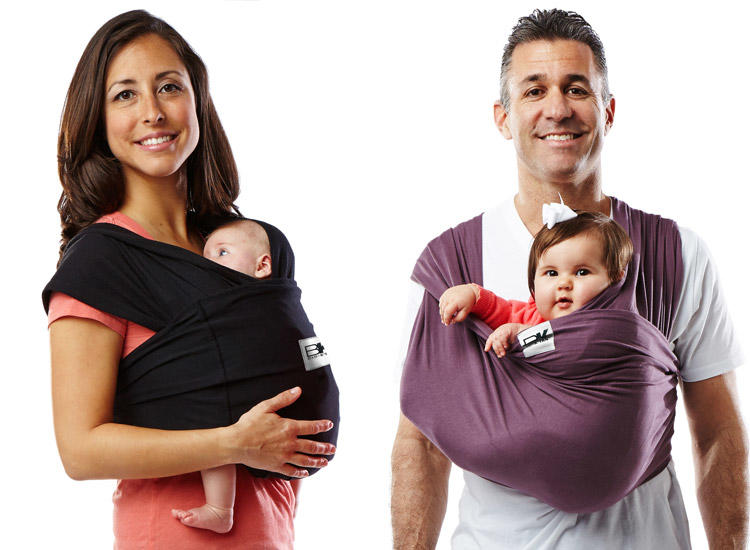Despite a growing number of the latest trendy strollers in the streets of London, we have been seeing more and more mothers with baby carriers: from the simple scarf or preformed baby carrier to the mei tai or sling, there is a multitude of choices offered to parents! Yes, but what are the benefits?
More information about the benefits of the right baby carrier; for both yours and your baby’s comfort.
Baby carriers are fantastic for keeping your child close to you, but they can also help with thermoregulation, correct positioning for better psychomotor development, and allowing you to continue your daily activities while looking after your baby
How to choose the best baby carrier?
With such a wide variety of models, how do you choose your baby carrier? The choice is of course personal and for the comfort of both carrier and baby. Here are some of the different kinds of baby carrier:
Carrying scarf/wrap: this technique is for all parents wanting a carrying method that respects the physiology of their baby. It can be used from birth until about 2/3 years old. Parents can wear it at the front, back or on the side. The only drawback to this method is that it can take longer to put on and get ready.
The preformed baby carrier/baby carrier: this is a Westernized model of the scarf “backpack” version. The preformed sling can be used from birth (depending on models and brands) until about 3 years old. It provides a sense of security for parents.
The 6 key points to follow for different kinds of carrying
- The baby’s hips should be in frog-like or “M” position. The knees should be higher than the buttocks in order to respect their natural body posture and prevent hip dysplasia.
- The baby’s back should be rounded. To achieve this, favour frontal carrying until the baby is 6 months old.
- The fabric must support the baby’s head in order to avoid neck extension until the baby acquires sufficient muscle strength for head support (4 to 5 months old). In addition, the head and spine should remain aligned to avoid any muscle tension. Also make sure that there is enough room between the chin and the chest to avoid any respiratory problems.
- The baby’s hands should be in front of him/her against your chest, keeping their arms and legs together. This promotes a sense of safety.
- The baby’s height should be just under your nose.
- The baby carrier must be adjusted to each user, the belt properly positioned on the lower part of the back, at the beginning of the pelvis and not under the ribs. Avoid asymmetric carrying (on the hip or sling type) in order to avoid tension in your back. A good distribution of the baby’s weight on the carrier’s shoulder/back/pelvis will ensure his/her comfort.
For more information about our baby carrying classes and breahtfeeding classes in London to avoid back pain with our osteopath postnatal specialist: click here
Our physiotherapy and osteopathy treatments are covered by most health insurances and are Bupa registered & recognised (BUPA Global and BUPA UK), Axa registered & recognised (AXA International, AXA PPP), Cigna registered & recognised and WPA registered & recognised
For home visit physiotherapy & osteopathy around London:
0207 125 0262 / 0782 455 3765
If you want to receive news and offers from us


